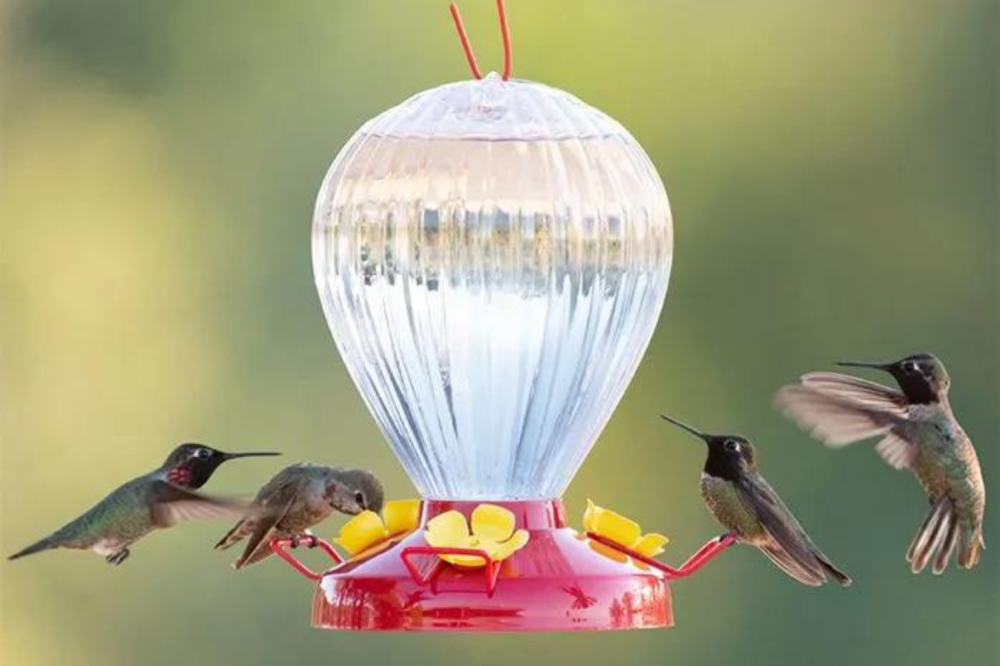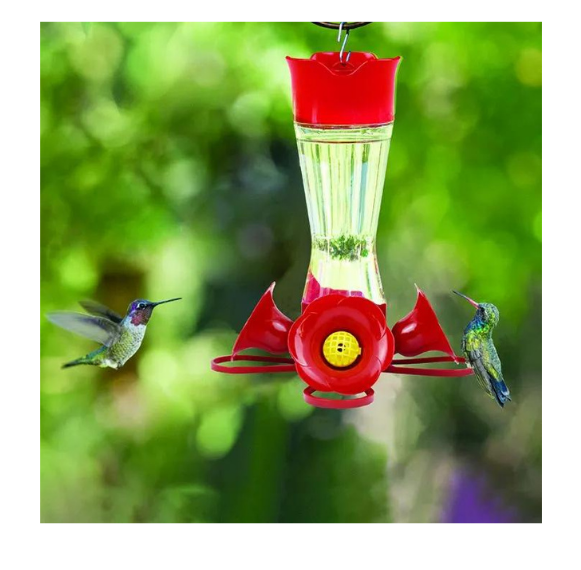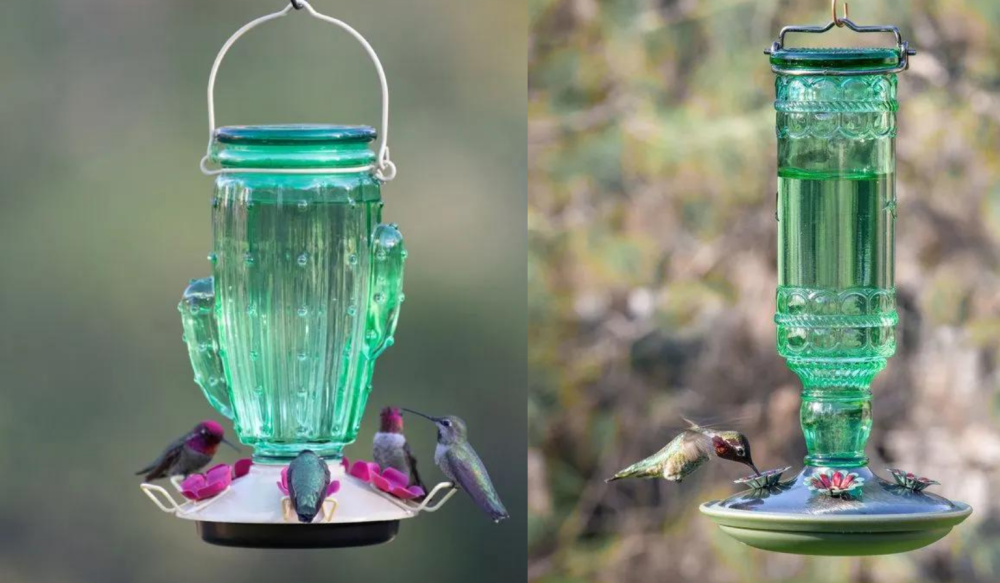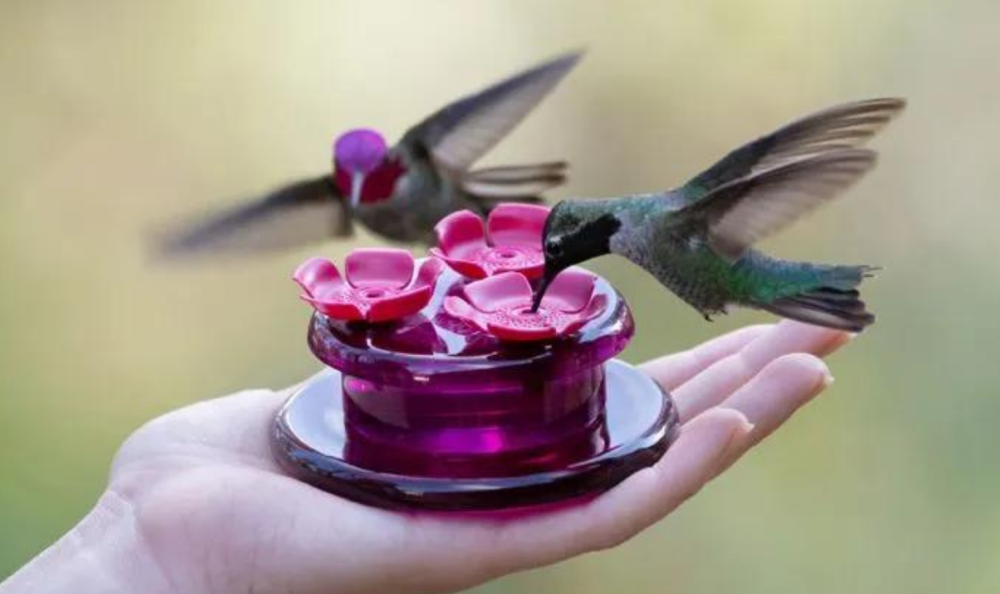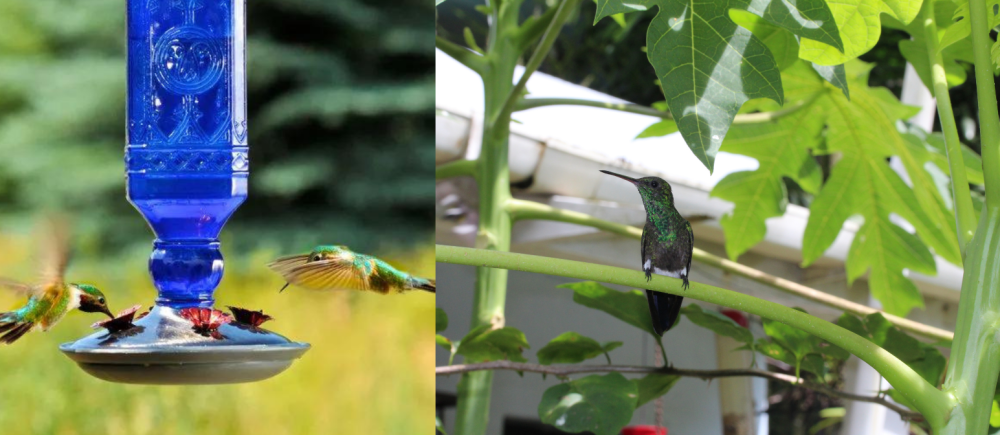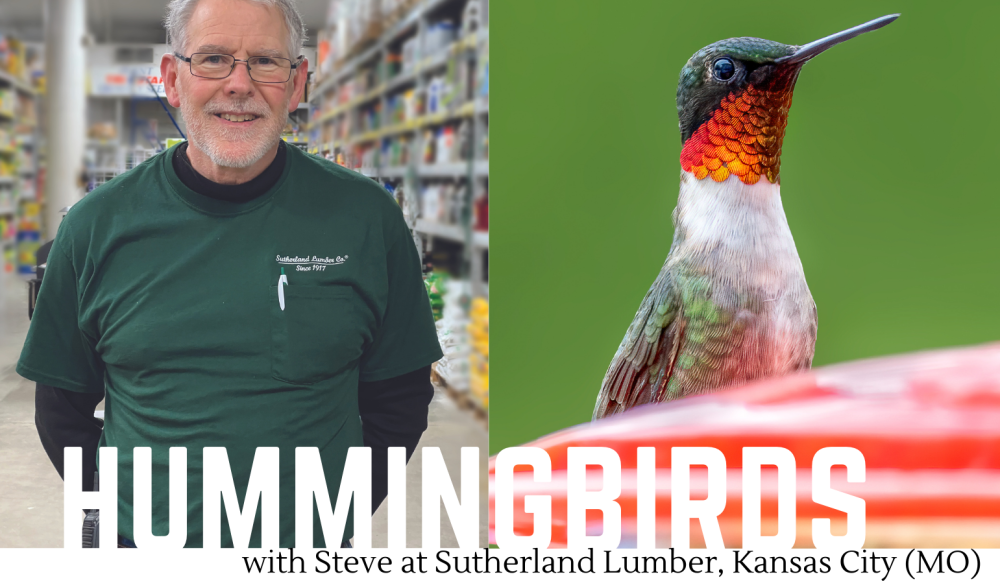
The spring migration of birds has begun including that of the Ruby Throated Hummingbird. The Ruby Throated’s journey is impressive as it will fly non-stop from the top of South America across the Gulf of Mexico, a distance of about 2,500 miles. Therefore it is no wonder that when these birds make it to the U.S. They are ready to eat!
These amazing creatures will flap their wings up to 90 beats a second. They are the only bird that can fly backwards and they consume half their body weight in bugs and nectar, feeding every 10-15 minutes and visiting 1,000-2,000 flowers per day.
If you want to attract and possibly have hummingbirds nest near your home and keep them from moving on, it is essential to provide them food.
There is a wide variety of hummingbird feeders to choose from. When selecting a hummingbird feeder, Steve suggests buying two feeders that are easy to wash. Once they are being visited on a regular basis, you may discover you will need to empty every few days, especially on hot, sunny days.
If you are a very patient person, you might consider trying a handheld feeder. Likewise, hummingbird food can be purchased or you can prepare your own. The recipe is simple.
1. Mix sugar and boiling water until sugar is dissolved.
2. Cool and fill feeder.
3. Hang up your feeder outside and wait for the hummingbirds to come.
Note: Please do not substitute honey, which can promote dangerous fungal growth, or use red food coloring, which is not necessary and could also prove harmful to birds. The color found on the feeders will naturally attract these curious creatures. On one occasion while outside wearing a floral shirt, an inquisitive hummer stopped for several seconds mid-air and about three feet away, surveying Steve’s attire.
Providing a complete diet in your feeder is not essential, because the birds will balance their diets on their own. Hang the feeder where you can see it from inside your house.
If you have many competing hummingbirds, consider placing additional feeders in different parts of your yard. Have feeders up by April 25 thru October 10.
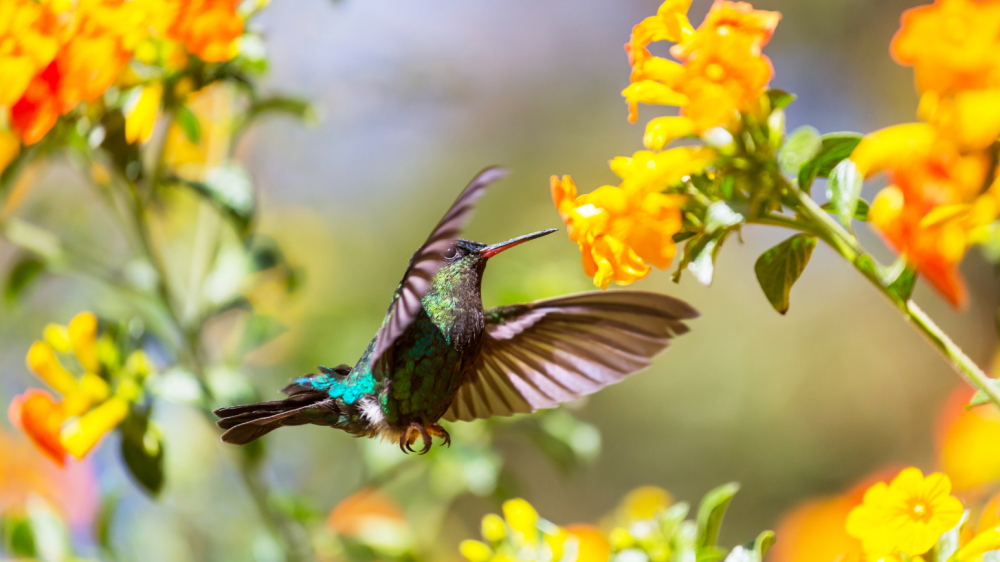
Planting native plants is another good option. Pick plants based on their growing requirements (sun versus shade, moist versus dry soil, etc) and ideally plant a variety that bloom throughout the growing season.
Flowers supply hummingbirds with the nutrient-rich nectar that can provide up to 90 percent of their diet. Hummingbirds especially love red or orange tubular flowers, such as those found on trumpet creeper, native honeysuckles, and red buckeye (listed below).
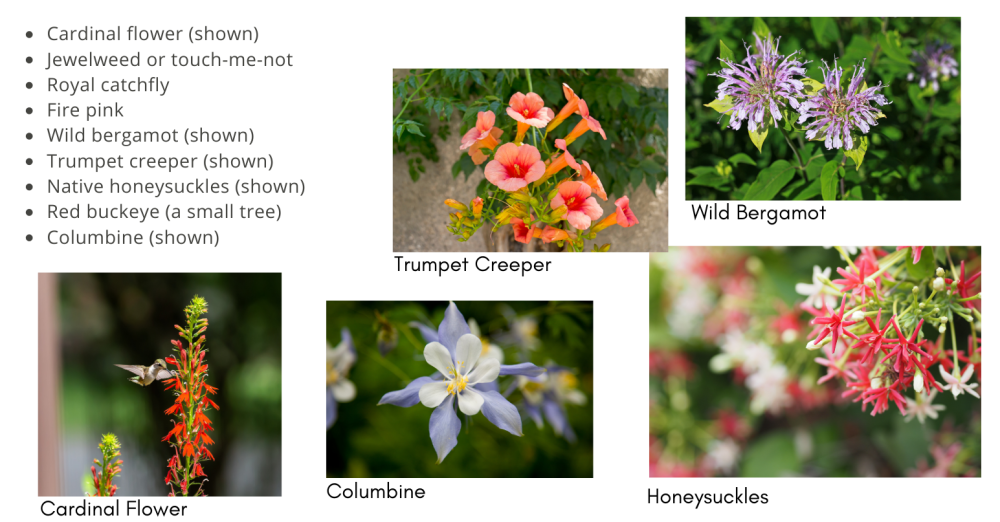
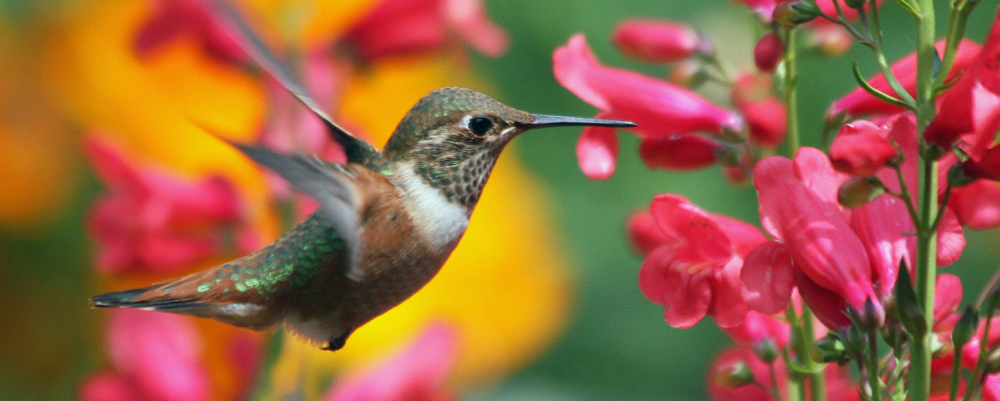
Hummingbird diets are not exclusive to the plants listed above. To feed on 1,000 to 2,000 flowers a day to get their daily nutritional needs, hummers will feed on a multitude of flowering plants.
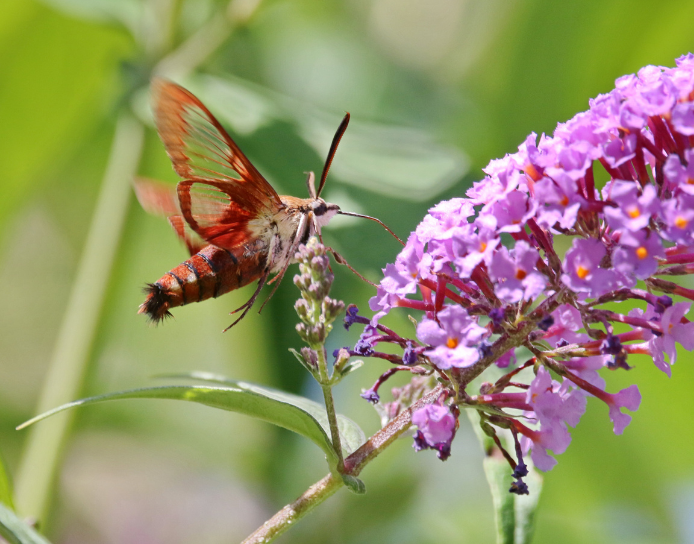 |
After providing food for a while, you may have an imposter showing up to your yard. Whereas east of the Rocky Mountains, there is only one species of hummingbird in Missouri, the Ruby Throated Hummingbird, there are over 50 species in the Lepidotera family refered to as Hummingbird Moths. Although smaller in size than the Ruby Throated, they mimic them quite well. |
Below is a brief list of “Hummingbird” plants and corresponding bloom times that Steve has seen feeding on plants in his yard..
April/ May
Columbine (Aquilegia canadensis
Eastern Redbud tree (Cercis canadensis)
Rose Verbena (Glandularia canadensis)
Sand Phlox (Phlox bifida)
Purple Poppy Mallow -(Callirhoe involucrate)
Bee balm, or Wild bergamot (Monarda fistulosa)
June/July
Blue False Indigo (Baptisia australis)
Missouri evening primrose (Oenothera macrocarpa)
Foxglove beardtongue (Penstemon digitalis)
Copper Iris (Iris fulva)
Butterfly milkweed (Asclepias tuberosa)
Bottlebrush Blazing star (Liatris mucronata) basically any of the Liatris species
August/September
Indian Pink (Spigelia marilandica)
Rock Pink (Phemeranthus calycinus)
Buttonbush (Cephalanthus occidentalis)
Rose mallow (Hibiscus lasiocarpos)
Texas Green Eyes (Berlandiera betonicifolia)
New England Aster (Symphyotrichum novae-angliae) and several other in the Aster family
Purple coneflower (Echinacea purpurea) and several others in the Echinacea or coneflower family

